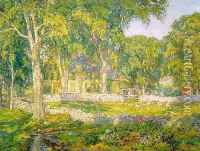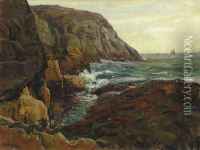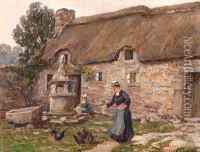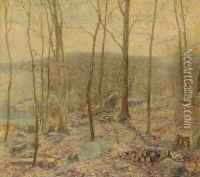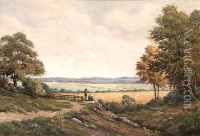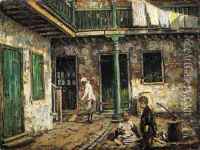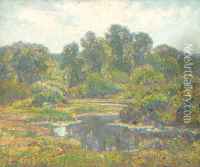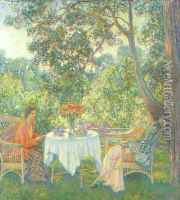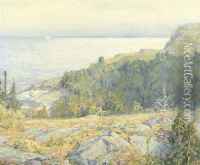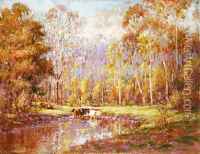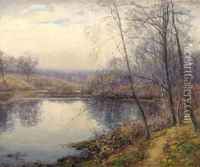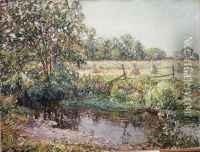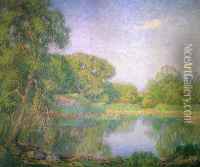Wilson Henry Irvine Paintings
Wilson Henry Irvine was an American impressionist painter renowned for his landscapes and innovative use of light and color. Born on February 28, 1869, in Byron, Illinois, Irvine began his artistic journey at a young age. His initial education was in the field of design at the Art Institute of Chicago, where he refined his skills and developed a foundation that would inform his later work as a painter.
After studying in Chicago, Irvine moved to New York in 1903, where he joined the Holbein Studios and was influenced by the burgeoning American Impressionist movement. His style evolved to emphasize en plein air painting—a practice of painting outdoor scenes on location, which was central to the Impressionist ethos. Irvine became a master of capturing the transient effects of light and atmosphere in his work, and he often explored the New England landscape, particularly the area around Old Lyme, Connecticut, which was a hub for American Impressionism.
In 1914, Wilson Henry Irvine became a member of the National Academy of Design and also associated with the Lyme Art Association. His contributions to the field were recognized by his peers, and he was respected for his innovative techniques, such as the 'Irvine stroke,' which involved a distinctive way of applying paint to create a shimmering impression of light on canvas.
Throughout his career, Irvine exhibited at numerous prestigious venues, including the Corcoran Gallery biennials, the Pennsylvania Academy of the Fine Arts, and the Art Institute of Chicago. His works are part of many important collections and continue to be appreciated for their vibrant and expressive qualities.
Wilson Henry Irvine's dedication to the Impressionist style and his exploration of color and light dynamics marked him as a significant figure in the American art scene of the early 20th century. He passed away on January 23, 1936, in Lyme, Connecticut, leaving behind a legacy of artistic innovation and a body of work that remains influential to this day.
